Women

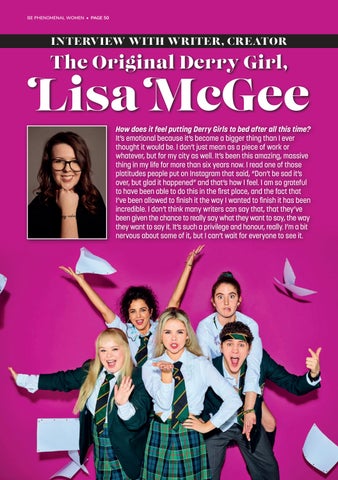

The people have spoken and change is afoot - well, let’s hope so because so many are in dire need on a daily basis. Having to choose between eating and heating is not an option that any of us should face in 2022.
It doesn’t matter whom you voted for - and I know that the complexities of this place mean it’s not simply a binary choice but rather our reasons for voting a certain way are often multilayered and personal. However, we must hold whomever we voted for to deliver what we have been promised concerning our cost of living crisis and the saving of our NHS.
On a daily basis, we hear or even witness what an underfunded NHS looks like and this will undoubtedly worsen if nothing is done urgently and as for fuel hikes - it’s enough to make many weep with despair.
Thankfully we are in spring and summer is just around the corner and so heating costs may not be as bad as they would be in autumn and winter so let’s take a little bit of comfort from that and try to remain positive.

This time of year also allows us to reconnect with nature and appreciate the beauty around us. Even those of us who live in the city can still find green spaces to walk, watch baby birds learn from their parents and see butterflies float from plant to plant.
And please don’t forget the bees! Just yesterday we noticed a bee struggle to get off the ground and so a little sugar water on a teaspoon was all it needed to get the energy it needed.

A little kindness can make a big difference and remember the same applies to how we treat one another. Sometimes all it takes to make a difference in someone’s day is a smile, so accept the challenge and set out to make this world a better one, one smile at a time.

Namaste


The best way to read the online version is by using the ‘Issue’ app which you can download for free. On most pages there will be additional information you can access by clicking on links which may be within the body of text or in a photograph. We’ve tried to highlight these links to make it easier for you to see. Please note, that we do not sell or pass on any digital footprint that you may leave while reading Be Phenomenal Women unless otherwise stated.
Page 04 Amanda Burton: The Original Silent Witness
Page 08 Chasing Rainbows in Hawaii
Page 12 Drawing Dementia
Page 16 The Ideal Garden for Wildlife
Page 18 Overweight & Undernourished

Page 22 No More Rules (In the Garden)
Page 24 Fashion
Page 30 Sustainable Fabrics

Page 32 Friendship 50!
Page 36 How Shops Use Psychology
Page 38 Arranmore Island

Page 44 Improve Sleep Now!
Page 46 Guilt
Page 50 The Original Derry Girl - Lisa McGee
Page 54 Yum!
Page 60 Decanting - Not Just for Snobs
Page 62 Hummingbird Project
Page 66 Julia Bradbury: Breast Cancer & Me
Page 70 Get the Bridgerton Garden Look

Page 74 Cocktails
Page 76 Music Rocks
Page 78 Book Reviews
Page 80 The Emotional Toolkit for Kids
Page 82 Just Say It!

When the last aired episode of Silent Witness left us with an appearance of Amanda Burton’s character Sam Ryan I was gobsmacked. Her appearance dangled the possible full-time return of the very dedicated, non-compromising pathologist.
The Northern Irish actor left home when she was 18 and headed off to England where she spent three years studying drama at the Manchester Metropolitan School of Theatre. She cut her acting teeth in theatre before landing the roles of Heather Haversham in Brookside whom she played for four years, Beth Glover in Peak Practice and then Sam Ryan in Silent Witness
While Amanda went on to play other long term roles in The Commander and Waterloo Road she more recently played unsavoury characters such as June Bamber in White House Farm and of course Katherine Maguire in Marcella
Silent Witness is this year celebrating its 25th season and has remained a firm favourite with consistently high audiences of 7-8 million viewers. There have always been strong female roles in Silent Witness, which I feel is part of the attraction, but the original was Sam Ryan and after 17 years of an absence she returns with a bang. So what was behind her return?
What appealed to you about returning to Silent Witness as Sam Ryan?
The shock! It's wonderful to be very surprised sometimes. Genuinely, these things don't often come one's way. I just thought, "What a great idea! How brilliant that they're thinking of doing that!" I thought the storyline was quite bold and
I really liked that. After meeting the producers, I just loved what they were thinking for Sam, I was very much on their wavelength. It was such an attractive idea and I would have been absolutely mad not to do it!
Did it feel like coming home in a way?
Yes, it did. It was genuinely a really, lovely thing to step into Sam's shoes again and to catch up with who she is now and where she is in her life. I loved the fact that she was still very much pioneering and busy and connected - that meant a lot to me. I was very, very happy that she wasn't being tracked down to some sort of remote corner of a British village where she was judging hen competitions!
What trait did you focus on when returning to the character of Sam Ryan?
Her fingerprint in the show is really this blinkered focused energy. She is a very independent thinker. And so that's what I brought to her again. But there are also lots of lovely add-ons in her life. For instance, she's very happy with her partner Jomo Mashaba played by the lovely Hugh Quarshie, and they have grown a business together.
Where do we find Sam at the start of the series?
There is a catastrophic event which suddenly puts her life in jeopardy and has a direct impact on her partner's life.


And so, you're thrown into this great big washing machine and are wondering what is going to come out of it. Why has Sam chosen to go to the Lyell? Why has she brought this case to them when she could have access to so many different people? So, this lovely mystery, thriller aspect comes into it. I love the fact that you're left slightly wondering whether she's gone over to the other side. Is she going to take the devil's shilling or is she as self-righteous as she used to be? I just hope audiences get a kick out of watching her again.
It was wonderful. Coming together with Emilia, who's held this show together so brilliantly for so many years, was lovely. It was extra-ordinarily special. To see these two powerful characters working together was amazing. In the script, they call them the two titans of the medical world.
Emilia is just an incredibly generous actress. There was a really nice sense of trust between us. We fed off each other a lot, and there were just genuinely lovely, warm, empathetic responses from both of us. And you don't get that every day. Do you still have a lot of fans coming up to you in the street asking when Sam is coming back? That often happens when I'm doing my weekly shop in the supermarket, and I am a bit of a captive audience. 20 bunches of bananas later! We always have a bit of a cackle about that. The fans, of course, are fantastic and keep the show on the road. I hope they're going to really enjoy seeing this because I don't know of any other character or any other show where this has happened before. Equally, we’re celebrating
25 series of Silent Witness, it’s the longestrunning crime show in the world, and that is a remarkable achievement.
Why does Sam Ryan remain so popular as a character?
At the time, it was quite unusual to see a woman playing that depth of seriousness, that depth of soulfulness. Her edges were never really rounded off. She was always quite spicy, quite like a terrier. But Sam was a very truthful character, she upheld a lot of things that were very, very important. There was no double-dealing with her, she was just incredibly straightforward.
Tell us more...
Sam was this one woman charged with finding the truth in so many of those awful crimes and at a huge cost to her life. I wouldn't say that she was an unhappy character. I wouldn't like to label her like that at all. It's just that her devotion to her career was like a calling. I suppose that was quite unusual 25 years ago, it wasn't exactly the norm. Also, Sam managed to offset any gore, in Silent Witness, you had this character who led you through the darkness, and you felt safe with her.
Why do you think Silent Witness has lasted so long?
It always has to come from the top, and Emilia is very dedicated. When you have an actor who really cares about a show, that enthusiasm creates an environment where everyone is very focused on producing brilliant drama.
How would you sum up the experience of coming back to Silent Witness?



It proved to be everything that I hoped it would be. It was very, very joyful. I loved Sam's journey, and I loved working with Emilia, David and Genesis and all the guest actors who are in it as well. It was just gorgeous. I mean, it's ridiculous - I get paid for this!
Is there any chance that Sam could come back in another quarter of a century?
You'll just have to ask me in another 25 years. By then Sam really would be judging hen competitions!
How does it feel to have Sam Ryan return for this landmark series?
It's wonderful that we're celebrating with Amanda. We wouldn't be where we are today without her. It's her legacy we live with. Sam is such a pioneering figure. Back then, female leads were few and far between. Going into Silent Witness, I felt that there was no way I could take over from Amanda, but the producers said, "Don't worry, we'll take it in a different direction." The thing I feel so proud about is the way the show has evolved. But it all started with Amanda and Sam Ryan.
What does Amanda bring to the show?
She's such a terrific actress. She put on Sam Ryan's shoes and walked straight on set without a moment's hesitation.
How does Nikki react to Sam?
They tread carefully around each other. At one point in the first episode, Sam intervenes during a post-mortem that Nikki is doing. Nikki is trying to get the measure of Sam and fathom her out. Amanda is so skilled at playing mystery, I loved the scenes we had together.
How was it working with Amanda?
It was an absolute delight. Having watched her over so many years, it was very surreal. She is so iconic. We are only here because of her. She was the complete guiding light of the show for many generations, and it was a joy to meet her and to work with her.

How did you find it working with Amanda?
It was amazing. She was so lovely. We had a few scenes together, and it was wonderful to hear about her experiences on Silent Witness. She has so many layers to her. It was such an honour working with her.


Ever since a group of intrepid mariners arrived in Hawaii from the Marquesas 1,500 years ago, a successive stream of voyagers, warriors, settlers, missionaries, labourers and now tourists have been chasing rainbows in Hawaii.

And who on earth can blame them? Mile after mile of sand ranging from sugary white to red and jet black surround these islands that are warmed by the sun and caressed by trade winds. And the islands boast an incredible biodiversity, from desert and tropical rainforest, to snow-capped mountains and coral reef.
A mere toddler by geological standards, the string of islands and atolls that make up Hawaii was developed in isolation, thousands of miles away from the nearest landmass, due to a chain of dramatic volcanic activity that continues to this very day.
Beginning as volcanoes rising from the sea, life came to the archipelago drifting on the waves, or carried on the winds, and tagged along by sea birds and humans. The result is a unique masterpiece of natural diversity, where 21 of the world’s 22 climatic zones support an incredible 88 Eco-systems.
So whether you're interested in hiking to a waterfall to admire it cascade into clear waters; sailing the sea in search of a humpback whale breaching from Pacific waters; pottering around a botanical garden to gaze upon the rare exotic
flowers; or sitting beneath a graceful palm to watch a red glazed sun disappear into a glittering Pacific - Hawaii offers today's more eco-savvy travellers as many surprises as nature herself.
Some would even say that it's paradise on earth.
But paradise has many corners - so take a look at our guide to Hawaii's six main islands - it'll help you decide which corner of paradise you want to chase rainbows in…



Oahu
Oahu is the third largest Hawaiian island and the most visited. The island covers an area 608 square miles and boasts some 112 miles of coastline.
Oahu was added to the island kingdom in 1795 when King Kamehameha I, from Hawaii's Big Island, forced the Oahu king's forces to surrender at the Battle of Nu'uanu Pali.
With its fine harbours, Oahu gradually became the political, economic, military, educational and cultural centre, and by 1850 the Hawaiian
royal court had moved permanently to Honolulu. The bustling city of Honolulu proves that Oahu is more than just sand and surf- it's the cosmopolitan hub of the island chain.

Not to be missed: Hanauma Bay, Waimea Bay, Waimea Falls, Pearl Harbour and the Polynesian Cultural Centre.
Kauai
Kauai is the oldest and fourth largest of the Hawaiian Islands. It was built by a massive volcano of which Mount Wai'ale'ale, at 5,148 feet, is the eastern rim.
The island has 90 miles of coastline (and more miles of beach per coastline than any other Hawaiian island) and is remarkable for its spectacular and widely varied landscape. It's all here - from the desert-like Waimea Canyon, 'The Grand Canyon of the Pacific,' to the velvety green Napali Coast, with its cliffs rising to 2,700 feet.
To maintain Kauai's quiet and small atmosphere, it is forbidden to build properties on the island that are more than four stories high - which is roughly the same height as a palm tree!

Not to be missed: Waimea Canyon State Park, Koke'e State Park, the National Tropical Botanical Gardens, the Napali Coast State Park, Po'ipO Beach and Hanapepe Town.

Hawaii (The Big Island)
Hawaii’s Big Island is the youngest and largest of the Hawaiian islands - and it will continue to grow as long as lava continues to pour out of Kilauea, the world’s most active volcano.
If it's red-hot lava you are looking for, The Big Island is the place to be - Klauea has been erupting since 1983, casting its orange glow on the island and spewing hissing lava into the sea.
Of all the islands, Hawaii's Big Island is the most ecologically diverse, with natural environments ranging from the desert plains of Ka'u to the snow-capped peak of Mauna Kea.

There are said to be 13 climatic regions on earth and the Big Island has all but two - the Artie and the Saharan.
Not to be missed: The Hawaii Volcanoes National Park, Akaka Falls, the Volcano Art Centre, the Pu'uhonua O Hiinaunau National Historical Park, and Mauna Kea, which at 28,000 feet above the ocean floor, is the best place on Earth for stargazing.
Maui
Maui is the second largest of the Hawaiian Islands. It reaches from sea level to 10,023 feet at the summit of the world's largest dormant volcano, Haleakala.
The island is named after Maui, a mischievous mytho· logical figure of ancient Hawaii whose antics are recorded in historic chants. Legend has it that Maui dragged the Hawaiian islands out of the ocean with a giant fishhook.

Not to be missed: Haleakala Crater, lao Valley State Park, historic Lahaina Town, snorkelling at Molokini, and whale-watching.
Molokai
Long ago the friendly island of Molokai was to be known as the 'lonely isle' because the power of its Kahuna priests was feared throughout the Hawaiian Islands. The mana (spirit) there was considered to be the strongest and greatest in all Hawaii.
The highest sea cliffs in the world surround the little valleys of Molokai's east coast, and Kahiwa Falls, where water plunges some 1,750 feet, are the highest falls in Hawaii.
Development on the island has been quite slow. There are no high-rises, no fast-food chains, and there is just one single
traffic light on the whole island - because Molokai is all about the slow, simple life.
Not to be missed: The Keonelele sand dunes, the Halawa Valley Lookout, snorkelling in the natural pools of Kapuaiwa Coconut Grove and Moa'ula Falls.
Lanaii
Hawaii's most secluded island is the sixth largest and has some 47 miles of coastline. In the olden days, Lanai was known as the 'isle of contentment', which conflicts somewhat with the legend that Lanai was once an evil place that was overrun with demons.
It was not until the evil spirits were driven out by Kaululaau, the exiled son of a West Maui king, that the natives finally went to live on Lanaii.
Nowadays Lanaii is all about tranquillity and seclusion. On an island where pineapple was once king, golf and tennis now rule - because this is where the elite come to play.
Not to be missed: The Munro Trail, the Garden of the Gods, the Luahiwa Petroglyphs, Shipwreck Beach, Sweetheart Cove, and watching the turtles swim at Polihua Beach.
Sky Blue Vickie is a travel and tourism storyteller located in Vancouver. Come with her as she travels the world! Follow her on Instagram @SkyBlueVickie




I retired in 2017 and three weeks later my mum, normally a very active octogenarian took seriously ill. She made a recovery of sorts but was then diagnosed with Vascular Dementia which had gone undiagnosed for many years.
My mum, struggling with her failing health and memory, all these strange new people and regimes down to the most intimate of personal care, all of which seemed imposed on us even though I knew we needed help. It was confusing at best.
This diagnosis plus another of Parkinsonism, a condition which mirrors the outward physical conditions of Parkinson’s disease, marked the beginning of a rapid decline in my mum's health and cognitive ability. This was also the point at which my role changed from a part-time to a full-time carer. I soon became aware, even after being a single mum of three and balancing a full demanding job, that this was to be the most difficult role I had ever taken on.
As my mother’s condition worsened we were given a ‘support package’. We had Carers, Social Workers and all sorts of other professionals popping in and out of our lives and our home.

We were thrown into a new world that we didn’t understand and that kept changing.
I don’t mean to sound negative because we were grateful for all the help we received, but our quiet peaceful and private existence was no longer. Nothing was stable, things could change from one day to the next, carers were taken of while others were put on, times were altered, not helpful when you are already confused and struggling with everyday situations.
My mum’s condition inevitably worsened and she was in and out of hospital many times. She went through so many stages of behavioural change that went on for weeks at a time.
Singing for hours at the top of her voice, and while it could drive you mad at times, it was funny because I think she thought she could go on stage with this newfound skill. Then it changed to yelling for hours at a time and I longed for the singing to return. These behaviours lasted for months at a time. She was constantly demanding and wanting attention, calling my name. She didn’t want to be left alone and she had no concept of time and was no longer amused by the TV or calmed by music.
She entered into a stage of delusion which started when she was in the hospital. She saw demons at night on the wards. They were real to her. She described them so vividly but couldn’t bring herself to tell me all of the things they did however she called them ‘pure evil’. “Get me out of here, please, please Margaret get me out of this evil place”
From then on she would refuse to go back to that hospital because of what she saw there. It was real, she was living in some kind of hell inside her head and I couldn’t help her. And then there were monkeys. These monkeys came with her from that same hospital, she

explained where they lived on the hospital grounds, bred there by some strange man. Unfortunately, at least one followed her home and tortured her in her room for weeks, hiding in corners or behind me when I came into the room or looking at us through the window, and she got cross when I wasn’t quick enough to see them before they disappeared. She lived in a dark and frightening place which was so real to her.
I was entitled to two, three hour periods per week, of additional care time to allow me to do whatever I wanted. I went for walks but because of lockdown couldn’t visit friends, go for coffee or to the shops or wander around the museum, like everyone else downtime pleasures were limited. Sometimes I just went and sat in the car at the water's edge and watched the birds, the boats, the rain.

I was grateful that I did have one release and that was drawing. I drew when I could and I drew my mum. In the difficult moments when she was shouting and yelling I could sit and draw her, sometimes I even wrote down what she was shouting. Through the repetitive nursery rhymes, the singing, the demons,




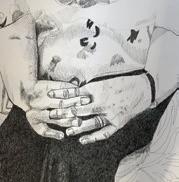


I drew and wrote as I listened and tried to understand and feel less ineffective and create some calm within myself in the midst of what often seemed like inescapable chaos. On the good days, it was a lovely opportunity to connect, helping me concentrate on her and her on me. These were special little times that we had. She loved that I drew her and she loved to see the finished result. In calmer times it initiated a conversation and sparked memories, whereas in the darker hallucinatory days and the loud, loud vocal days it was a way of calming myself and the drawings and the words, merged to make a strange record of our difficult time through this awful illness. When I eventually looked back on my sketchbook after my mum’s death I felt the drawings said more about me and my state of mind than about my mum. I had never intended to share these drawings but have been encouraged to do so and they have now become the starting point of an exhibition in Vault Artists Studio's new Canteen Gallery in Belfast.


I think my mum would have been proud. I think she would love that she was the centre of attention in this exhibition, but I think most of all that she would be so happy that perhaps it might prompt some conversations that need to be had around the focus, understanding and connectivity of care needs for the elderly and their family carers.
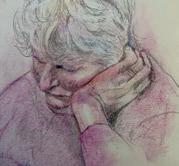



Even in inner-city areas wildlife is incredibly important, as well as being surprisingly abundant. Bringing a garden together with its surroundings, wildlife adds something extra, taking it beyond just a bit of grass or a flower bed and making a city garden a haven.



Sadly many gardens are losing their link with wildlife - front gardens are being concreted over to create driveways, back gardens are being paved and lawns and beds are being cut back to make room for decking, we’re so concerned with the design that we don’t consider nature.

Encouraging wildlife can be as simple or complicated as you wish, you might like the idea of helping bugs to thrive, encouraging birds, observing butterflies, giving shelter to mammals or giving a habitat to increasingly endangered aquatic species.
What is important to remember is that animals of all kinds need food, shelter and safety - give them these three things and you could be part of a push to save wildlife from becoming as extinct as the dodo.

Bird feeders and birdhouses are an easy way to encourage birds, many of which are in steep decline, into your garden. Keep feeding tables close to shelter to avoid larger overhead predators but keep them away from fences or walls where cats can reach them.

Additionally avoid serving peanuts, which can choke smaller or younger birds. If in doubt speak to staff at a garden centre with knowledge of the best feed they offer. Ponds that are at least 18cm deep and surrounded by good plant cover are excellent to encourage frogs, newts (many of which are very endangered), insects and water snails.
Stock well with oxygenating plants and dot leaf piles and rocks around the garden to allow frogs plenty of places to hide on their dusk hops about the place. Don’t be too ready to obliterate slugs and snails which provide valuable food for amphibians.
The good old bumblebee is set to become a thing of the past if we don’t begin lending it a hand. So rather than running screaming in the opposite direction - bees are far less likely to sting than wasps as the sting will kill them and are excellent helpers in a flower garden - provide them with a shop bought bumblebee box or even get crafty to build your own.
Add plenty of pollen-rich flowers for food and watch as your back garden starts to buzz. Log piles in a quiet, undisturbed corner are just the ticket for hedgehogs. Although hedgehog houses are available a simple pile of old wood can also provide shelter for any number of other wild creatures. When it comes to planting, concentrate on native wildflowers which provide pollen and nectar that local wildlife can feed on and consider leaving grass longer for cover.


New report shows we urgently need a nutrition reset to get immune health back on track.
Three-quarters of us recognise that immune health is compromised by bad diets, according to a new report commissioned by the Health and Food Supplements Information Service (www.hsis.org), yet there are worrying signs that our diets are way off track, putting immune health under strain as summer gets underway.
The report - Immune Health: Micronutrients Under The Microscope - brings together a new poll and data on the healthiness of our
diets to delve into our immune readiness. The results reveal that many of us badly need a nutrition reset with food portions out of control, comfort eating rife and immunity nutrients, such as vitamin D and iron, in decline.

One of the report’s authors, GP Dr Gill Jenkins, says: “Good nutrition is essential for optimal immunity but, as far as our diets are concerned, key pieces of the puzzle are missing. Vitamins A and C - from fruit and vegetables - and iron from red meat, beans and green veg, are lower than ideal for some age groups, while most adults don’t take a vitamin D supplement as recommended.
“Fish intakes are also too low, leading to a massive shortfall in omega-3 fats, which help the body to calm down potentially dangerous levels of inflammation produced during an immune response.
“These nutrients all play a role in supporting two aspects of our immune function - innate immunity, which creates a barrier against invading pathogens, and adaptive immunity, which helps our bodies to target viruses and create antibodies.
“Given that diets in the UK are far from ideal, it’s a good idea to take a daily vitamin and mineral supplement, as well as an omega-3 supplement if you rarely eat oily fish. Supplementation has been shown to improve several specific aspects of immune health, particularly where deficiencies exist.”
Key findings from the HSIS report show:
• A third of survey respondents (34%) ate more comfort foods and snacks during lockdown.
• More than a fifth (21%) have been advised by a healthcare professional to change their diet to lose weight.
• Intakes of vital immune-supporting nutrients, including vitamin A, vitamin D, B vitamins and iron, have declined over the last decade.
• Almost half (48%) say they have no idea what the Government’s Eatwell Guide advises - that’s the ‘bible’ on what a healthy diet looks like.
• Around two thirds (64%) of adults don’t take a vitamin D supplement.
• Only half are actively following advice to eat more fruit and vegetables.
• Three in five (60%) don’t pay attention to recommended portion sizes or portion control.

With immune-supporting nutrients more important than ever, the HSIS report highlights the woeful gap between recommended intakes of key vitamins and minerals and the harsh reality of our current diets. The risks to optimal immunity are evident.

What it does: Essential for the production and growth of immune cells
Immunity alert: Low intakes increase the risk that pathogens will invade the eye and the respiratory tract.
Who’s at risk: One in ten toddlers and primary school children don’t get the recommended amount of vitamin A. All children under 5 should be given vitamins A, C and D according to the government.

What they do: B vitamins are needed to make the enzymes that extract fuel from our foods. This feeds the immune cells.

Immunity alert: A lack of vitamin B6 reduces the production of immune cells whilst promoting inflammation. Folate deficiency depresses antibody responses.
Who’s at risk: Nine in ten women of childbearing age have low blood levels of folate. Vegans are particularly vulnerable to low vitamin B12 intakes as they consume no animal foods.
Vitamin C:
What it does: Protects immune cells from inflammatory damage caused by free radicals
Immunity alert: Low vitamin C levels increase the severity and duration of respiratory tract infections.

Who’s at risk: In studies of older people, deficiency levels ranged from 14-26%, with men at greater risk. New research suggests we may need four times the current vitamin C recommendation to fight respiratory viruses.
Vitamin D: What it does: Most immune cells, especially T and B lymphocytes, have vitamin D receptors which suggests they need vitamin D to function well.

Immunity alert: Deficiency is associated with increased risk of COVID-19.
Who’s at risk: People from ethnic minority groups are at very high risk of deficiency, with figures ranging from 43% deficiency to 66%. In the general population, around 17% are vitamin D deficient.
Iron:

What it does: Promotes the growth of immune cells and helps to regulate the inflammatory response.
Immunity alert: Low blood levels linked to lower T lymphocyte numbers, a reduced antibody response, and impaired killing of pathogens
Who’s at risk: Almost half of teenage girls lack iron, and dietary levels have fallen in the past decade, probably as a consequence of red meat being shunned.

Zinc:
What it does: Helps to maintain the structure and function of the skin and the gut barrier, and vital for the growth and function of several types of immune cells.
Immunity alert: Being low in zinc impairs T cell function and increases susceptibility to infections of the respiratory and gastrointestinal tracts.
Who’s at risk: Despite a small improvement in recent years, more than one in six teenagers (16%) still fail to achieve the minimum recommendation for zinc.

Omega 3 fatty acids: What they do: Regulate the protective membrane around cells, which helps to curb inflammation after a major immune response.

Immunity alert: Low intakes prolong inflammation which then impairs long term immunity.
Who’s at risk: Anyone who doesn’t eat oily fish (salmon, mackerel) - which is by far the best source.
Dietitian Dr Carrie Ruxton, who co-authored the HSIS report, says:

“A recent study from King’s College London confirms that dietary supplementation can give your immune system a helping hand. Amongst almost half a million people subscribing to a COVID-19 app, the incidence of SARS-CoV-2 infection was cut by 14% in those who took probiotics, omega-3 fatty acids, multivitamins, or vitamin D.

“It’s clear our diets will need to deliver more nutritional value to give us optimal immunity support. So, we need to urgently dump our comfort eating habits, watch portion sizes, up our vegetable intake, and choose healthier options for snacks. Tackling low levels of immune-support nutrients with a daily vitamin and mineral supplement is also a useful health hack.”
There’s only one rule: there are no rules. Mix anything with anything else. Ingredients: bulbs, bulb flowers and the latest emotional responses.


Many people want to escape for a while from their daily drab routines. This is the kind of wish we can put to good use in presenting flowers and bulbs as attractively as possible. With a wish for more freedom, people are doing things they wouldn't have thought of doing before. Or they're doing things differently. But what does this have to do with flowers and bulbs?
Many people think it's fun to try doing something entirely different by using something with which they're very familiar. That goes for flowers and bulbs, too. They're cropping up in the most unexpected places. As if they were simply plunked down anywhere. After all, when you come home with your hands full of flowers, you have to put them somewhere. At that point, anything can become a temporary vase. A brightly coloured pail; an old bottle; even your welliesl
If hot colours are your choice when designing a border, you'll find many summer flowering bulbs that will fit the bill. Dahlias, for example, provide the most gorgeous gradations of bright colours.
The Melody Group, consisting of dahlias that grow to heights ranging from so to 70cm, includes a red ('Bolero'), a bright yellow ('Latin'), a lilac ('Lissa') and an orange ('Melody Swing'). A warmly colourful border with lilies, dahlias, cannas and gladioli is a real eye-catcher.
Designing a summer bulb border must start with an expedition to the garden centre. Every spring, all garden centres have a wide assortment of bulbs in the prettiest colours imaginable. You can choose from dahlias, gladioli, zantedeschias, lilies, begonias - the list goes on and on.


No matter what the size of a garden, if it doesn't have appealing elements, it won't tempt you to walk or sit in it. A garden has to invite you to enter, to look, to discover and to enjoy. This doesn't mean, turning the garden upside down every year.
A good remedy for restoring new life and colour to the garden is to insert flowering bulbs here and there. Pots and containers with nothing but dried out summer plants? Clean them out and pop in some spring bulbs!

The Dahlia family is a multicoloured group. They include, for example. The pompons, the star-shaped varieties, the single and doubleflowered kinds, and there are all kinds of colours and colour combinations. The Dahlia family even has a 'black pearl' in its midst; this splendid
'Arabian Night' is a must for your flowerbed. Moreover, dahlias are ideal for the summer and late summer garden because they flower for such a long time and often late into the season. You can be enjoying these special flowers in abundance even in September.
Whatever you decide upon, make sure you're doing it your own way - remember, no more rules!

From My Mother’s Garden is a collection of limited edition clothing in exclusive prints capturing the vibrant colours and magical beauty of nature.
The range has been created by Dorset boutique owner, Penny Callaghan who was inspired by her Mother’s garden and their close mother & daughter bond. It fulfils a long-term dream to create her own slow fashion range and it is available in many boutiques, galleries and gift shops around the country. You can also purchase online at www.frommymothersgarden.co.uk


 1 Blossoming Robe £99
1 Blossoming Robe £99












1 Hydrangea Lightweight Kimono £65

2 Black Lace: Elderflower Scarf £30
3 Maple Leaf Raincoat £125
4 Sweet Pea Trousers £75
5 Harmony Pink Hydrangea Skirt £69

Saving the planet can get difficult in a trend-driven world. Due to the rapid rate of fast fashion production, manufacturers rely on synthetic materials that are inexpensive and quick to produce. Is it time to change our buying habits based on sustainability?
Fabrics made from natural or recycled materials, designed to be environmentally friendly are termed sustainable fabrics. These are fabrics made using pesticide-free fibres, made in closed-loop systems, or designed to reduce water and chemical waste.
However, there is a lot of debate over which fabrics are sustainable. In this article, we provide you with a list of sustainable fabrics and their importance.

Bamboo

Bamboo is a regenerative, fastgrowing, organic crop often seen as a sustainable garment fabric that does not require fertilisers. Though there are concerns about land clearing and harvesting methods, bamboo continues to stand out. This fertiliser-free crop is incredibly breathable, comfortable, and absorbent, making it a top choice for sustainable fashion.
Besides its anti-static properties, bamboo also provides UV protection, which cuts out 98 percent of harmful UV rays, thus providing another benefit to the wearer.

Hemp
Plants of the cannabis family include hemp. The top three advantages of hemp include its rapid growth,
soil conservation, and pesticide-free nature. This versatile fabric contains no irritants, is durable, and can be used for a variety of things.
Hemp is organic by definition and does not require certification. This fabric promotes longlasting wear and is a natural microbial agent.

Cotton grown organically is free of harmful pesticides, synthetic fertilisers, and genetically modified organisms (GMOs). Farms that grow organic cotton use natural fertilisers rather than harmful chemicals. The practice of organic cotton ensures that the environment is preserved and quality of life is improved by harmonising tradition, innovation, and science.
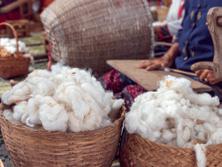
Organic clothes are ideal for babies as they absorb moisture and ventilate cool air, preventing babies from sweating and overheating. Additionally, its weave will keep babies warm in the winter. These properties make it more convenient to buy organic cotton for every season.
Silk
Silk comes from silkworms that feed on mulberry tree leaves, which are biodegradable and easy to grow. As a result of the characteristics of this plant, silk is produced with relatively low waste. However, due to silk's animal-based life cycle, it's important to look for trustworthy brands and make sure they use ethical production procedures.
Silk helps the body retain heat during cold weather, while excess heat is expelled during hot weather. It helps your body maintain a comfortable, natural temperature. Silk is hypoallergenic, resistant to dust mites, and acts as a natural fungicide


Linen is derived from a very versatile crop called the ‘flax plant’. The fabric can grow in poor soil and does not require much water or pesticides. In addition, every part of the plant is used, so nothing is wasted. When untreated (not dyed), linen is strong, naturally moth-resistant, biodegradable, and highly absorbent. In addition to being Eco-friendly, it is also light and can withstand high temperatures, as well as absorb moisture without harbouring bacteria. Clothes made of linen are comfortable. It is due to this reason that many people around the world favour linen bedding. Unlike other fabrics, it does not retain moisture and allows plenty of air to pass through. The Linen is easy to wash and is even stronger when wet.
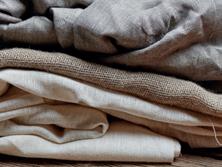
Oftentimes, the material we wear harms humans or animals and sometimes both. On top of that, they release harmful chemicals and microplastics into the environment for centuries. Feel good about the fact that in choosing sustainability you are helping the environment. Our choices need to have a lower impact on the environment, and each of us must take responsibility. Choose sustainable and organic clothing to contribute to a better world.
About the Author ANDREA MICHEAL

A top-level leadership coach invites 50 friends to celebrate a milestone birthday with a new task, challenge or adventure
Following the loss of her husband John to pancreatic cancer over a year ago, Lisa Strutt, a top-level leadership coach, guide and motivational speaker, has invited 50 friends to challenge her to a new task, challenge or adventure as part of her 50th birthday celebrations. Here she talks about love, loss and moving forward.
“I prefer to say moving forward in life. Not moving on. You don’t move on from someone you love and nor do I ever want to. John and I were childhood sweethearts. We met when we were just 13 and his memory, the many happy years we had together, I will gladly carry with me every single day.
Grief is a strange emotion. I think it was William Spence who wrote: “Grief is just love with nowhere to go.” I believe it can go somewhere though, and that somewhere is talking about it, harnessing and putting it to good use.
At speaking engagements, I tell my story willingly now because I know it helps

comfort and support people who have been or are going through the furnace, in the same way our family has.
I’m also using what I’ve learned through John’s illness and death to advocate for better patient-centred care and more support services for young people. We have three teenagers who had to face trauma at such a young age.
Being a Positive Intelligence Coach (PQ) has definitely helped.
I’ve trained with Shirzad Chamine, Chairman of CTI, the largest coach training organisation in the world. He uses breakthrough, research-based tools to strengthen the part of your brain that serves you and quieten the part of the saboteurs helping people to handle life’s challenges with a more positive mindset and less stress. We call this mental fitness.
I’m part way through my own PQ programme, What’s Holding You Back?
It’s aimed at helping people get through difficult life junctures. I can’t recommend the programme highly enough to anyone feeling stuck or wanting more out of life and work.


I’m aware that so-called ‘negative’ emotions, including stress, are the result of self-sabotage. We often work so hard on our physical strength without paying too much attention to staying mentally strong. I believe getting the balance right is key to achieving your goals and living the life you really want.
It’s about putting the hard work in and creating the daily habits to move forward one step at a time. This doesn’t have to be overwhelming. Personal resilience, showing up for yourself, being intentional about leading a better life, and giving generously of yourself to the benefit of others are themes I have coached on with clients for many years.
This thinking, which for me is also a way of life, helped to form my Friendship 50 plan. Grief, I’ve come to understand can co-exist with happiness. They are not mutually exclusive.
So, to celebrate my 50th birthday this year, I’ve asked 50 friends to push me ‘out of my comfort zone’ and challenge me to an event, task or adventure I wouldn’t otherwise have had.

Courage is my watchword for the year, coupled with a belief that life is for living. John’s death brought that into sharp focus.
So far so good. I’ve already taken part in a Greek night preparing delicious food with my good friend Ani Kanakaki, attended a charity RNLI Cullercoates Ball in North Shields with lifeboat volunteer, Deputy Launch Authority (DLA) Mike McGuire and lately, even though I can’t draw a stick man, had an art class and the best craic with the incredibly talented artist Aly Harte.

John and I had previously asked Aly to paint Castlerock Beach for us, a place John loved. It had meaning for him and is now a legacy piece for our children. In all these experiences, I take the learning. For example, when I won a prize at the RNLI ball, Mike McGuire said to me: “You are a lifesaver.”

The four words gave me goosebumps and brought a tear. Maybe two. Such clarity of purpose. It got me thinking about what would prompt people to put their own lives at risk, without prejudice to save at sea, the life of another human being?
Ask yourself this. How clear is your purpose? Have you reflected on why you do what you do? Who benefits and what is it about that benefit or reward that matters to you?
The Friendship 50 tasks and challenges are now coming thick and fast. I am determined to have the courage to take part in every single one of them especially when friends have taken the time to think about and plan for our adventures together. That’s very special to me.


It’s so important, particularly during turbulent times to surround yourself with the right people, develop supportive networks, be among those who will hold you up when the chips are down and always have your back and best interests at heart. Because nothing prepares you for grief, for raising teenage children who have lost their dad, for the rawness of their emotions.

Getting by with the help and I have to say ingenuity of my friends, I’m still standing, still giving back, still pursuing joy and happiness because that is what John would have wanted and what I expect of myself.

I’m also just a little bit proud I have put into practice what over the years, as a coach I have preached.

You might think that you only buy what you need when you need it. But whether you are shopping for food, clothes or gadgets, the retailers are using the power of psychological persuasion to influence your decisions and help you part with your cash.
If you think back, I’ll bet there’s a good chance that you can remember walking into a grocery store only to find the layout of the shop has been changed. Perhaps the toilet paper was no longer where you expected it to be, or you struggled to find the tomato ketchup.

Why do shops like to move everything around?
Well, it’s actually a simple answer. Changing the location of items in a store means that we, the customers, are exposed to different items as we wander around searching for the things we need or want. This ploy can often significantly increase unplanned spending, as we add additional items to our baskets - often on impulse - while spending more time in the shop.
Buying on Impulse
In fact, studies suggest that as much as 50% of all groceries are sold because of impulsiveness and over 87% of shoppers make impulse buys.

While it is complicated and affected by many factors, such as a need for arousal and lack of self-control, it is known that external shopping cues - ‘buy one get one free’ offers, discounts and in-store promotional displays, for example - play a key role.
An appealing offer can lead to a rush of temporary delight, and this makes it harder to make a rational buying decision. We’re overcome by the perceived value of the ‘saving’ if we buy the item in the here and now, so we ignore other considerations such as whether we really need it. The need for instant gratification can be hard to ignore.
Bundling is another technique that retailers use to trigger impulse buying.
You’ve probably seen it quite often. Complementary products are packaged together as one product, with one price, which often provides a substantial discount.
Game consoles, for example, are often sold together with two or three games, and grocery stores have 'meal deal’ bundles and even web pages dedicated to a whole range of bundle offers.
While these strategies can help to swell the profits of retailers, they can also contribute to problems for their customers.
Impulse buying can undoubtedly affect a consumer’s mental wellbeing. It increases feelings of shame and guilt, which in turn can lead to anxiety, stress and depression.
And it’s potentially even more serious when buying on impulse leads to excessive buying, especially if people spend money they don’t have.
Online shopping has been found to give a dopamine boost, as it is released into our brains when we anticipate pleasure. So while we wait for our purchases to arrive, we tend to feel more excited than if we had bought things in store.
If this pleasurable feeling is well managed, then there’s no harm in it. But, sadly, it doesn’t always end there. That fleeting feeling of pleasure can sometimes lead to the onset of a shopping addiction. This can happen when a consumer wants to continuously experience the feel-good ‘hit of dopamine’, so they fall into a pattern of buying more and more items until it gets out of control.
On the flip side of the coin, shopping can help restore a person’s sense of control.

When we’re feeling unhappy or anxious, we tend to think that everything is out of our control. But as shopping allows us to make choices - which
shop to go to or whether we like an item - it can bring back a feeling of personal control and reduce distress. So it can be a more meaningful activity than many think.
Retailers can help us too
While retailers might not be keen to reduce the amount of shopping we do, they could, if they wish, help to influence our buying decisions more positively.

There is a pressing need to combat obesity in most countries of the world. That’s why the UK government has decided to restrict the promotion of unhealthy foods - those high in free sugars, salt and saturated fats - in prominent store locations from October 2022.
It’s a strategy that could help
Removing tempting treats from the checkouts can help to reduce the amount of sugary foods that are bought; in some cases by as much as 76%.
And a recent study found that by increasing the availability and promotions of healthier food options (such as stocking low-fat chips next to regular chips) and making them more visible through positioning and clever use of signage, shoppers can indeed be encouraged to make better choices.
Ultimately, the key to resisting goods we don’t want, or need - and making healthy decisions - lies with us. It helps to be conscious of what we are doing while shopping. A good personal strategy is to try to browse less and use a shopping list instead and try to only buy what’s on it. But be kind to yourself, because it can be easier said than done.
Cathrine Jansson-Boyd Reader in Consumer Psychology, Anglia Ruskin University

There’s a childlike giddiness that I always feel as we approach the ferry at Burtonport and wait to be transported in time and distance to Arranmore Island. Time, because there’s a quality of life on the island that reminds me of a kinder more laid back approach to life.

On the journey across I eagerly watch the sea for a glimpse of dolphins who frequently accompany the visitors across while shaggy cormorants and gannets deep dive to forage for fish.

The crossing only takes about 20 minutes but when you land you immediately feel far removed from the daily grind as you wind your way through a small settlement of places to eat and drink.
Here you will also find the Arranmore Modem; a high-speed broadband hub for those who just can’t leave the grind behind totally. Here you can pay for a hot desk should you need to work while visiting but let's hope that you can completely break away and enjoy what this small island has to offer.
Just around the corner is another new initiative - an outdoor shoreline amphitheatre for visiting and home-grown entertainers.
The island is approximately 8 square miles and is the largest of the islands that sit off the West coast of Donegal and with a population of less than 500, there’s lots of room to explore without feeling you’re a trapped tourist.


Once disembarking from the ferry and travelling south along the East coast of the island you’ll see gentle hills with a patchwork of stone walls separating one field from the next and you’ll marvel, as I have, at the sheer magnitude of building these walls without the benefit of modern technology.

Peppered throughout these fields are whitewashed homes and outhouses and sheep that roam freely alongside occasional hens that share their space. The beaches are clean and sandy and border translucent blue seas that are very inviting to those who love to sea swim in safe waters.
Most of the population of Arranmore lives on the East coast and it becomes evident why this is as you travel around to the West coast.

It couldn’t be more different. Gentle hills swap places with working turf bogs and then dramatic rugged cliffs that can take your breath away. Up here at certain times of the year, you’ll see sheep defy gravity as


they munch their way along the cliff edge while bog cotton is carried on a breeze out to sea. The roads along this coastline can be challenging but always worth the trip so don’t be put off.
As you travel along the North coast the scenes of the mainland are spectacular and there are lots of little hidden spots you can explore safely. Like the rest of the island, there are places for you to picnic or simply just sit and wonder at the gift of nature.
This part of the island, in particular, is abundant in colour during spring and summer with wild primroses, bluebells, honeysuckle, montbretia and fuchsia to name only a few. There’s no order to where they grow; no manicured hedgerows just simply seeds that have blown in the wind and landed where they will.

There’s a beautiful and poignant backstory to this island; one of endurance and perseverance dating back centuries but also of modern-day islanders using their resources to make sure this home of theirs survives going forward.
Arranmore Island is a destination that won’t disappoint with stunning scenery, lively music and craic, friendly islanders (except for the occasional goat or ram), and good eateries. What’s not to love about this place?



Every time I leave the island it’s with a heavy heart and a desire to return as quickly as I can. I’m pretty sure you’ll feel the same way.
Tour the island
With a registered tour guide.
Contact: Denis
T: +353 (0) 87 3162146
www.facebook.com/arranmore. guidedtours/
Watersports
Sailing, Kayak Tours, Paddleboarding and Bike hire daily between 1st April and 1st September.
T: +353 74 9520024
Email: ionad@cffam.com
www.madeinarranmore.com
Sea Safari & Heritage Tours
Contact: Jim Muldowney
T: +353 (0) 86 3300516
www.arranmorecharters.ie
The Arranmore Loop begins and ends at the ferry port: this 14+ km signposted hike is of moderate difficulty.

Lighthouse & Steps

The original lighthouse was built in 1798 but was replaced with the current one in 1859. It is situated in the northwest of the island atop dramatic rugged cliffs. Nearby are the 151 lighthouse steps which were used to deliver supplies to the lighthouse before the road was built. Great care is required while visiting both the lighthouse and the steps.

Beaver Island Monument
During the Great Hunger, many people fled Ireland and settled in America. This monument is dedicated to the link between Arranmore and those who settled on Beaver Island on the shores of the Great Lakes of the USA.
Situated in the south of the island the land was given to the islanders in 1725 to bury their dead following the tragic drowning of nine people on their way to a funeral on the mainland. A new graveyard replaced it in 1893.


Accommodation
The Cove
www.facebook.com/ TheCoveArranmore
Muldowney B&B and Glamping
www.muldowneysbb.com/
Arranmore Hostel
www.facebook.com/ arranmorehostel

Claire’s B&B
www.clairesbandb.wordpress.com
AirBnB
www.airbnb.ie/arranmoreireland/stays
The Glen Hotel www.facebook.com/ The-Glen-Hotel
Arranmore Holiday Village
https://arranmoreisland.ie
Sunset photos kindly supplied by Pat Cook


Sleep disturbance or insomnia is not uncommon in women entering midlife. While this may be due to a physical concern, usually it's not. Let's discuss some things you can do NOW to improve your sleep.

Good sleep is a component of good health. Things that you do for good health are essential and will directly impact your quality of sleep. This means eating a healthy diet, regular exercise and good daily multivitamin/mineral supplements.
A healthy diet that is high in phytoestrogens such as fruits and vegetables may help if the cause of your sleep disturbance happens to be related to being perimenopausal. Apples, carrots, cherries, green beans, oats, peas, potatoes, soybeans and sprouts just to mention a few!
Avoid stimulating agents such as nicotine and caffeine - that includes coffee, tea, soft drinks, and chocolate.
Even one cup of coffee in the morning can affect sleep quality hours later. We, as women, tend to metabolise caffeine much slower than men. If you smoke... quit. Short of that, avoid smoking within a few hours of going to bed.
Sleep in a dark room. (How bright is your illuminated clock?)

Develop a sleep routine: going to bed at the same time or a ritual such as having a cup of relaxing tea and then washing up, and the like. Avoid taking naps.
Is your sleeping space comfortable? Look at light, noise and temperature. How about your bed? Is it too firm or too soft?
Avoid late night heavy meals. However, a light snack at bedtime may be helpful. Try relaxationmeditate, take a bath, listen to soft music, read a gentle book, get a massage.
Avoid the news and other violent or emotional stimulation before bed. It's hardly relaxing!
Avoid alcohol late in the day. It can cause waking in the night and impairs sleep quality.
Limit your bed activities to sleep and sex.

If you can't sleep - get up and do something until you can sleep.
If worries are keeping you awake, try keeping a diary - it may provide a way for you to "release" the worry onto paper and thus relax and sleep.
There are natural supplements that can be tried. If you are a milk drinker, consider having a glass of warm milk. Milk when it is warm releases tryptophan, which aids sleepiness. On the other hand, I recently read that warm milk also has substances that can keep you awake. Let your own body tell you what it likes about milk.
Other suggestions include valerian root melatonin, passion flower and of course
chamomile, catnip, anise or fennel teas. Some companies package teas in their own formulations for sleep. Your local herbalist or health food store may also be able to give you suggestions. As with anything else, the key is to try different things and see what you respond to.
If none of these suggestions work I would recommend the following. First of all, check with your GP to ensure there is nothing physical that needs to be attended to. Keep a sleep diary for 3 months with the goal to see if there is some sort of pattern.
Keep track of the time you go to bed, awaken, how often you are awake and/or if you get up at night. Are you tired when you awaken in the morning? What time are you getting up? Is there something that is on your mind? Does any of this correlate with your cycles (if you still have them).

Use of sleeping medication is something that can sometimes be used to get your body back on track, but it's not for long term use, and should only be used when other remedies have been ineffective.

For over 26 years, Barbara C Phillips, MN, NP has been involved in health care. As the founder of OlderWiserWomen, LLC that experience and passion is focused on women who want to experience the freedom, magic and wisdom of successful ageing.

Many people feel guilty when watching horrific things happen to others on the news. It can also hit us when we think about a time we broke someone’s heart, snapped at a child or deeply hurt a friend’s feelings. In fact, most of us feel guilt from time to time, and it can be a deeply unpleasant experience.
But why do we feel guilty so easily - what purpose does it serve? And what can we do if it becomes unbearable? Luckily, psychological research provides some answers.
Guilt alerts us that our moral standards have been somehow violated. It is a feeling of remorse over something terrible that we contribute to, or ignore, which explains why so many people feel guilty when watching the news.
People differ in how easily they feel guilt, based on their personality and life experiences. Those who have high levels of empathy or care a lot about social relationships may be more prone to feeling guilty, while people who have high levels of ‘dark personality traits’, such as psychopathy or narcissism, may be less inclined to do so.
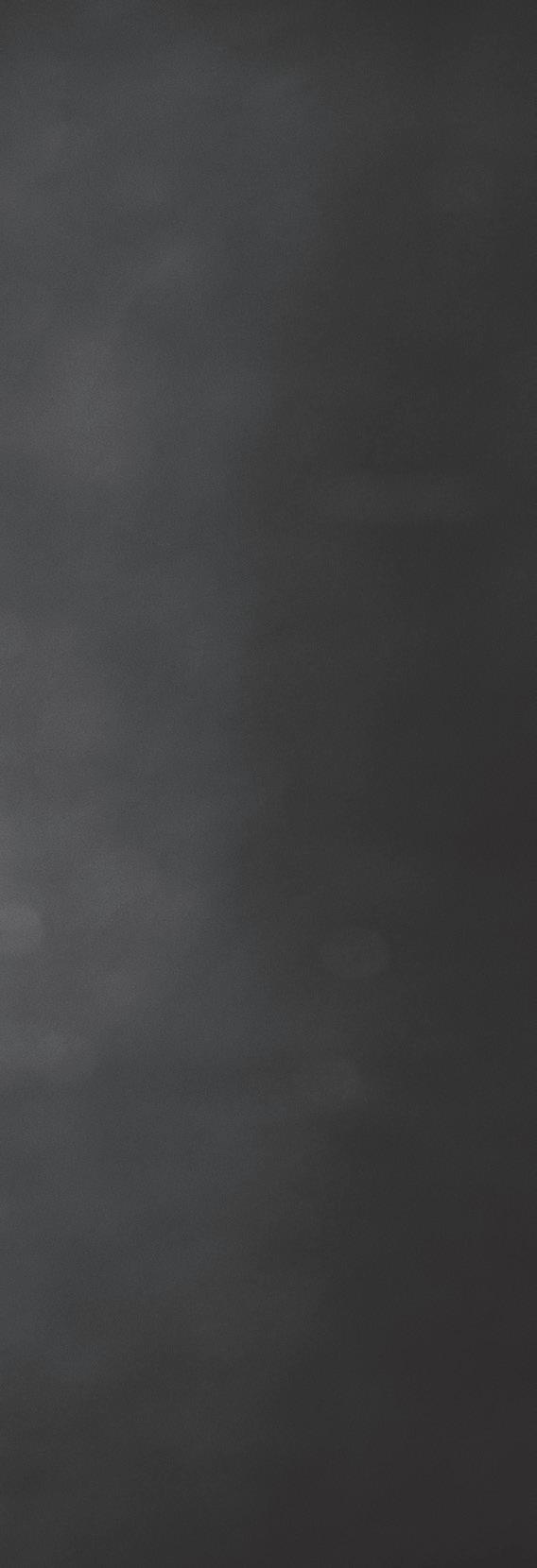
Guilt is often contrasted with shame, which describes self-demonisation. When you feel guilty, you think that you did something wrong; when you feel shame, you feel that there is something wrong with you for doing that thing. While shame is rarely useful and often leads to social withdrawal, guilt may have either positive or negative consequences.
You can experience guilt relating to various life circumstances. For example, eco-guilt relates to feeling guilt about the environment. Survivor’s guilt describes guilt experienced by those who got away unharmed from a dangerous situation, such as surviving a war or COVID, when so many other people died. But we also experience guilt when we did something we should not have done.
Guilt can be what researchers call ‘adaptive’, meaning it can benefit us and help us survive. When we feel guilty, it is a sign that our moral compass is working, and we can tell the difference between what is right and wrong. This ultimately helps people get on with and care for one another.

Guilt can help us connect with others, especially when bad things happen to them. Seeing someone suffer and feeling guilty makes us more likely to engage in ‘reparative behaviours’, such as extending an olive branch or being exceptionally generous with our resources, all of which eases the guilt we feel.

Experiencing guilt can motivate people to apologise for doing something bad, thereby minimising inequalities in society.
In the same way, guilt can be useful in romantic relationships, too, helping us to treat our partner well - and make up for it if we fail to do so.
When it comes to witnessing wars, famines or disease outbreaks on the news, guilt may inspire us to volunteer or donate money. Watching the generosity of other people who play an active role in helping others is also guilt-provoking, which can in turn activate us to take similar action - thus paying forward.
But guilt can also have negative consequences and become “maladaptive”. There are two types of guilt that are particularly damaging to us: free-floating guilt and contextual guilt. Freefloating guilt occurs when you experience a general feeling of guilt; you feel you are not a good person. On the other hand, contextual guilt relates to taking too much responsibility for something - such as endlessly trying to help an ex in all areas of their life because you feel bad about breaking up with them. Many parents feel guilt on a daily basis.
But in both cases, there’s nothing you can really do to reduce your feelings of guilt. Instead, the feelings and actions continue, which make them maladaptive. For example, if you constantly feel like a bad person, this may get in the way of forming new relationships -
you may subconsciously sabotage them because you don’t feel you deserve them. And if your guilt never stops, you may spend so much time and energy taking actions to try to address it that you burn out, develop an anxiety disorder or become depressed.
When watching the news, you may start experiencing maladaptive guilt if you cannot pinpoint where the guilt is coming from - it may just become a general feeling. This could also be the case if you feel a personal responsibility for the bad news even though there is little you can do to change the circumstances.


The best way to deal with a guilty conscience is to take action that is appropriate to the situation. If it is an eco-guilt you experience, it may involve making small changes in your own life to ensure you live in a more sustainable way. You can also engage in community activities that help others understand the catastrophic climate situation. And if you feel guilty about how you treated a friend, it makes sense to apologise and offer to help in some way.
If you are experiencing survivor’s guilt, you may want to consider writing a letter of selfforgiveness, in which you detail what aspects of responsibility you want to take, show remorse, apologise to yourself and try to make amends.

The key in all these scenarios, however, is to ultimately let go of the pain. The world isn’t a fair place, and everybody makes mistakes sometimes. Endlessly blaming ourselves can be draining - and counterproductive. To muster up the energy and drive we need to create positive change around us, we need to feel good about ourselves occasionally, too.
Jolanta Burke Senior Lecturer, Centre for Positive Psychology and Health, RCSI University of Medicine and Health Sciences




How does it feel putting Derry Girls to bed after all this time? It’s emotional because it’s become a bigger thing than I ever thought it would be. I don’t just mean as a piece of work or whatever, but for my city as well. It’s been this amazing, massive thing in my life for more than six years now. I read one of those platitudes people put on Instagram that said, “Don’t be sad it’s over, but glad it happened” and that’s how I feel. I am so grateful to have been able to do this in the first place, and the fact that I’ve been allowed to finish it the way I wanted to finish it has been incredible. I don’t think many writers can say that, that they’ve been given the chance to really say what they want to say, the way they want to say it. It’s such a privilege and honour, really. I’m a bit nervous about some of it, but I can’t wait for everyone to see it.

Which bits were you nervous about?
Oh, God, always anything that touches on The Troubles. It’s normally fine, and I’ve got away with it so far, but I never want to offend anyone. I want the show to bring joy, but to be real, so I have to tackle it. I just hope I get the right side of the line.

The global response has been phenomenal. Why do you think that is?

I was thinking about this recently. I always remember watching Friends when I was 15, and Chandler said, “You stop the Q Tip when there’s resistance.” I laughed, even though I had no idea what it meant other than he was saying Joey was stupid. I didn’t know
what a Q Tip was. But you feel the rhythm of it and understand that it’s funny. And I think that’s what’s happened with Derry Girls. It doesn’t matter if people in other countries don’t know every nuance.
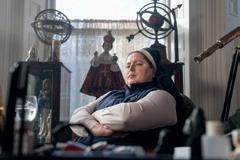


What is it like when you hold a premiere or an event in Derry?

It’s incredible. It’s hard to really put that into words, but this will never happen to me in my career again. But what’s also funny is I’ve moved to Belfast, and my name is recognised. One of my heroes is Jessica Fletcher from Murder, She Wrote and I don’t know if you’ve watched the show but occasionally people say to her, “Are you THE Jessica Fletcher?”

So now, my favourite thing is when I’m picked up by a taxi and the driver says, “Are you THE Lisa McGee who wrote Derry Girls?” *laughs* I’m like, “I’m The Northern Irish Jessica Fletcher!” It’s the coolest thing. I love that.
Do you ever think about what the Derry Girls would be up to in 10 years’ time?

I have! It’s so weird because I think of them as real people. I actually got so worried about Orla at one point that my husband was like, “She’s not real!” I think a lot about what they’re all doing. I’d love Ma Mary and Aunt Sarah to solve a crime. I decided that Orla is probably coaching a really shit sports team, like The Mighty Ducks, and she leads
them to glory. Michelle’s a DJ. Erin’s a novelist. Clare’s a top barrister somewhere. And James is a filmmaker.

Is that how you work? Do you literally have conversations with them?
With myself, yes. Walking around the house. Sometimes walking down the street in public. I always have my headphones on in case someone thinks I’m mad because I’m talking to nobody.
What was it like with the cast when you finally finished filming?
We were all really tired and emotional. The last thing we did was in the school. It was so crazy to finally be at the end of
this incredible journey which was tough and joyful in equal measure. The production got everybody a painting of Derry, which was really gorgeous. So, I have that in my house.
Did you take any souvenirs home with you?
No! Everyone else was doing that, and I didn’t! I really wanted the Angela Lansbury poster, the Jessica Fletcher poster, but I didn’t get it. I might ask if it’s still there somewhere. I never got time. I’d sometimes go to steal something and then get distracted by some question about something.
What do you think the secret to its popularity was in the end?
Maybe that it’s just joyful, and you’re going to be cheered up, and it’s nostalgic. But maybe it’s the characters. Everyone has their favourite, or Grandpa Joe will remind them of their dad or something, so it’s like a big cast of characters where there’s something for everybody. A bit like the Spice Girls.
Are you surprised that the younger generation has taken to it as well?
It doesn’t totally surprise me, because it’s a show about being young. A lot of the fans are super young. I’ve seen a Derry Girls birthday cake for a four-year-old, which is obviously too young to actually watch and understand it, but they must have seen pictures of the characters and they look bright and fun so they like it.

Have you enjoyed watching the cast go on to do other projects in between filming?
It’s been incredible to watch because it feels like yesterday that we began this journey. I remember the first auditions so clearly, and now they’re on the cover of all these magazines and they’re leading shows. It makes me very proud.
What’s next for you?
I’m doing another thriller with Toby [husband Tobias Beer]. He’s currently heavy on the script stage of that, and I’ll help out when I’m through the other end of Derry Girls. And then I'm going to start writing something else, another comedy, that I've put on hold for a while, it's really exciting but a bit scary. Because I’m a bit like, “How do I write other funny people? I don’t even know.” Coming up with a world, how each episode works and all that stuff. But I'm ready.
How have you enjoyed working with Channel 4 on Derry Girls?

This wouldn’t have happened anywhere else. It’s such a Channel 4 show. The reason it did happen is because of the support I’ve had. They really, really stand by their comic talent. And even if you falter, they still believe in you and believe you have a voice. They’ve been incredible for me, and I know lots of other Northern Irish writers are going, “Look at Derry Girls” and feeling inspired because we didn’t have any sitcoms at the time really. So Channel 4 have been amazing in helping to make this happen.




Ingredients:
170g Cottage Delight Celebration

Clotted Cream
375g plain flour
1 tbsp baking powder
1 tsp salt
70g granulated sugar
1 tsp vanilla extract
4 tbsp milk
160g diced strawberries
Cooking Method:
1. Preheat the oven to 200°C. Line a baking sheet with parchment paper and set aside.
2. Toss the diced strawberries with a bit of flour in a bowl and set aside.
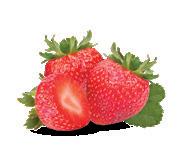
3. Whisk together the flour, baking powder, salt and sugar in a large bowl.
4. Add Celebration Clotted Cream, then stir in the vanilla extract and milk. Stir gently to form a dough. Add prepared strawberries.
5. Gently gather the dough into rough balls to create 6 scones.
6. Transfer to prepared baking sheet. Arrange scones on baking sheet with at least 6cm in between. Place baking sheet into the freezer for 15 minutes.
7. Remove from freezer. Sprinkle tops generously with white, granulated sugar. Work quickly so they don’t warm up.
8. Bake the chilled scones in the oven for 15 minutes, reduce heat to 180°C/160°C fan/ gas 4 and bake for a further 15 minutes until golden and cooked through.
9. Remove the scones from the oven and immediately put on a cooling rack to cool.
Ingredients:
125g salted butter
155g caster sugar

2 tsp lemon zest

½ jar Cottage Delight
Lush Lemony Curd
2 eggs
150g self raising flour
150g plain flour
125ml milk
Meringue: 4 egg whites

215g caster sugar
Cooking Method:
1. Preheat oven to 180°C/160°C fan/gas 4 then line a 12 cup muffin pan with paper cases.
2. Use electric beaters to beat the butter, sugar and lemon zest in a bowl until pale and creamy. Add eggs, one at a time, beating well after each addition. Add the flours and milk until combined. Divide mixture into paper cases. Bake for 20 minutes.
3. Once cooked, cut a deep hole from the centre of each cupcake and spoon 1 tablespoon of lemon curd into the hole.
4. For the meringues, whisk the egg whites until soft peaks form. Continue whisking and gradually add sugar 1 tablespoon at a time. Continue whisking until all sugar dissolves.
5. Use a piping bag to pipe meringue mixture over each cupcake. Use a cook’s blowtorch to lightly toast meringues or bake again for 3-5 minutes until toasted.




Ingredients:
120g softened unsalted butter (allowed to soften)
100g caster sugar
2 eggs (lightly beaten)
120g plain flour
1 1/2 tsp baking powder
4 tbsp Cottage Delight
Orange Marmalade
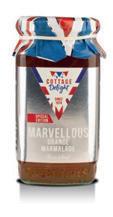
2 tbsp milk
50g icing sugar
Zest of one orange


Cooking Method:
1. Butter a 15cm loaf tin, and line it with baking parchment. Preheat the oven to 180°C/160°C fan/gas 4.
2. Beat butter and sugar together with an electric whisk until pale and fluffy. Whisk the eggs into the butter and sugar mixture. Sift the flour. Fold in the remaining dry ingredients the flour, salt and baking powder. Fold in the marmalade and milk. Work gently to form a batter. Transfer the mixture to the loaf tin.
3. Bake for around 55 minutes. Check after 40 minutes with a skewer. If the top has browned but the cake isn’t fully cooked, then cover it with foil. Allow cake to cool for 10 minutes. Sift the icing sugar into a bowl, add the warm water and mix. Stir in the marmalade. Spoon the mix over the cake, letting it run down the sides. Leave to set before cutting. Sprinkle over zest.
The idea of decanting brings images of blue bloods standing around a cocktail table with dozens of beautiful crystal bottles staring back at them. I used to think that people decanted their wine just to look ‘fancy’.

This may be true for some, but the real reason that wine began being decanted is because there was no filtration system in place for wine back in the day before mass production. The wine that would be poured from the barrel would contain a considerable amount of sediment and a system needed to be put in place to remove this before drinking. Now most of our wines are filtered to a very clear state and we don’t have to decant
to remove sediment but we do it to enhance the flavour prior to drinking.

Decant if your wine has sediment
Wines deposit sediment as a natural part of ageing, some more than others. Decanting the wine can help to separate the clear wine from the sediment. Decanting the wine also introduces air into the wine - letting the wine breathe - releasing the aromas and enhancing flavours, particularly useful for red wines that are a little harsh.
If your wine has been ageing for a long time Decanting old wines, just prior to serving, helps to ensure that the wines’ clarity and brilliance are not obscured by any deposit that may have developed over time (pour slowly and avoid decanting the last ounce).
If your wine is very young Decant young wines as much as several hours before they are served to give the wine a chance to breathe, simulating a stage of development that might normally be acquired after years of ageing (pour quickly, even up-ending the bottlethe idea is to expose the wine to air).
I like to decant just to see if my wine in the decanter tastes different than the wine I poured right out of the bottle. Why not!
Decanters are also pretty so if you are having a party, why not show them off. Just don’t keep them sitting out for too long.

For old wines with sediment, you need to be very careful when pouring the wine into a decanter. First, stand the bottle up for several hours to allow the sediment to settle at the bottom. Fine sediment will take longer to settle to the bottom of the bottle.
Use a lit candle or lamp if you can’t see where the sediment is in the bottle. Hold the bottle of wine so that the area just below the neck of the wine bottle can be seen through the light while pouring. Ever so slowly begin pouring the aged wine into the decanter. Be patient. Hold the bottle as much as possible perpendicular to the candle. As the last one-third is pored, carefully watch for sediment. Stop pouring when any sediment appears in the neck of the bottle.
For young red wines, splash the wine into the decanter. The more it splashes into the decanter, the more it comes in contact with oxygen. Let the wine settle and rest for a short time.

If you are decanting your wine in order to let it breathe you will usually want it to sit in the Decanter roughly an hour before drinking. Your goal is for the one to be giving off aromas. If it’s not releasing flavours into the air, it’s going to taste still and blah. There is however a point where you can let your wine decant too long. You would not want your wine to sit out at room temperature for 8 hours or more. At this point, the wine will become oxidised and begin to taste more like vinegar and/or sheer. Remember, back in the old days wine was kept at about 50 degrees so being at 70+ for a substantial amount of time would be bad for the wine.
Wine decanter design varies from purely functional to extravagantly decorated, but sometimes unusual design and functionality can go hand-in-hand as in the Orbital Decanter that, when removed from its base, will sit elegantly on your table while a gentle orbital movement increases the breathing of your wine with minimal disturbance. But the basic point of the decanter is to let air into the wine and to remove the sediment so whichever type you prefer is the one you should choose. There really is no right or wrong decanter.
Of course, you can always let your wine breathe by just taking the cork out of the bottle, but very little air touches the surface and it will take much longer to achieve the desired effect. Some experts prefer to let the wine breathe in the wineglass but personally, I find it hard to wait patiently once it’s been poured!


From our darkest moments come the greatest gifts. CEO, Leigh Carey talks about how personal tragedy led her to establish Portstewart’s Hummingbird Project; a mental health support service run exclusively by mental health experts all of whom have experienced mental ill-health themselves.
Portrush mum, Leigh Carey (42) who is married to buildings supervisor, David (39) is still facing the fall-out from a gynae operation six years ago that did not go according to plan. It’s a medical issue that for legal reasons, she cannot go into great detail about but it was life-changing and at first, not at all in a positive way.
An exploratory procedure to help the couple have a sibling for their daughter Holly (12) led to a traumatic experience triggering anxiety so severe, that she was diagnosed with post-traumatic stress disorder.
While Leigh got through the surgery, she woke up to find it had left her unable to have more
children as well as facing early menopause. The experience left her struggling and lost.
“There were so many factors involved in the trauma that caused my mental health to severely decline... it felt like the loss of womanhood and a loss of identity. It was so hard to even comprehend at the time.
“With Holly in nursery, we were meeting new people. It was in prime baby-making time. When the inevitable questions around siblings came up, I felt I needed to protect others from my experience, so either I laughed it off or it got to the point where I wasn’t able to socialise with other parents.
“I knew I was losing the person I was before.
My body changed; my confidence was shattered. Those couple of years afterwards were a dark time for us. I’m still suffering the medical consequences of what happened to me to this day.
“During my work in mental health, I had always kept the client at the centre of it. Going through it myself, I recognised all the support I had around me helped me to hold on by the skin of my teeth and not tip over the edge.”
Leigh’s experience left her fearful of hospitals, hyper-vigilant, emotionally unable to hold babies or small children and feeling deep regret for her husband David and daughter Holly, that there would be no more children. Resilience is a word much talked about at the Portstewart based Hummingbird Project. Psychological resilience is the ability to cope mentally or emotionally with a crisis or to return to pre-crisis status quickly.
Resilience exists when the person uses ‘mental processes and behaviours in promoting personal assets and protecting self from the potential negative effects of stressors.’
Leigh said: “Sometimes our darkest hours can bare the greatest gifts. For me, it was using my own lived experience of having mental ill health for the benefit of others. Lived experience makes all the difference when helping people. It has made me a better person and far better at my job.
“It made me able to come from a place of understanding of how traumas and social anxiety can impact you.
It is an insight you just cannot learn in a book.”
It was this motivation which drove Leigh to set up the Hummingbird Project. The organisation is operated entirely by a team of people who have all experienced mental ill health themselves. Resilience is something this team has in spades.
Leigh said: “We use the learning and insight we have gained from our personal stories combined with our expertise in mental health to help people who are struggling or going through some of the many difficult challenges life tends to throw at you.

“At Hummingbird, we are particularly proud of our Into Tomorrow Programme, a partnership we have developed with PwC. It’s an intensive, ground-breaking suicide prevention programme helping to tackle soaring suicide rates in NI and has delivered some incredible results.
“We are now working with our second cohort of young people. Such is our belief in the benefits of lived experience we have created a job for one of our young people from the first group to work alongside us and deliver the programme because we know how valuable this will be in building trust.
“A proud moment for us at Hummingbird was when Norman Cook/Fat Boy Slim took time out from his Belfast gig just before Christmas to meet with some of our young people, hear about their experiences and how the programme’s intensive one-to-one support really helped them get through some very dark days. He talked very openly to us about things he had found tough in his own life.

“Resilience is something we not only talk about at the Hummingbird Project but practice every day. We look out for each other that way and encourage other people to take control of their recovery through a system, unique to us we call the ‘three U model.’
It stands for, understand, unlock and uplift, she says. “We work with people to first understand their circumstances, what they like to do, find out what their strengths are and also any barriers they might have. Then we help them to decide what it is they want to do which could be a particular job or career or something as simple as just caring for their wellness or support with relationship issues.
“We help them to unlock their strength and remove any barriers. That is the uplifting part. It’s wonderful to see people understand what it is they want to achieve and then go out and try it and take ownership of their health and understand how to manage it.”
Leigh strongly advocates that early intervention is key.
“We have just come through one of the most disruptive times in modern history with the Pandemic and there is a war ongoing in Ukraine. This all has an impact on how we view the world and our mental health is affected. I think part of any mental health strategy should incorporate the thinking, there is a lot we can do to help ourselves.
“All the focus, time, money and effort, is spent dealing with mental health at the point of crisis when people are at the sharp end of the illness. We want to encourage people to put their hand up when they are struggling and help them recognise, that they will struggle at some point but there are steps that can be taken so they never reach a crisis point.
“I think the same way we look after our physical health; we should be taking just as good care of our mental health. Until this happens and society’s approach to mental ill-health changes, we’ll continue to experience a tsunami.
The Hummingbird Project offers a different model with intervention and prevention at its heart.”

https://thehummingbirdproject.org.uk/

For more than three decades, Shannon has worked in partnership with political parties, candidates, elected officials and community movements around the world on efforts that lead to better outcomes for citizens and societies. This often involves reworking and constructively challenging decisionmaking systems to ensure that they are inclusive and consultative and that they accommodate women’s natural role as political and societal leaders. Her work is based on the extensive research on the benefits to societies that actively pursue equality and inclusion, particularly gender equality.

Shannon brings that frontline experience in programme development and delivery to her current role of Director of Programmes, where she works with WFD’s talented and
innovative programming team to cultivate and support legitimate and resilient democratic governance.

Shannon is a specialist in organisational development, policy advocacy and political strategy. She is also an experienced trainer and facilitator and is an authority on adult learning.
Shannon has worked with the Northern Ireland Assembly, US House of Representatives, National Democratic Institute, Mercy Corps, EMILY’s List, Amnesty International, Children in Northern Ireland, as well as with groups and individuals seeking positive change in more than 20 countries worldwide. She holds a Bachelor of Arts in Political Science from Boston College and a Master of Law and Diplomacy from the Fletcher School at Tufts University. Shannon resides in Northern Ireland with her husband and two children.


Can you tell us about your documentary? Is it very different to your previous documentaries?
This is completely unlike any other documentary or television series I have made before. I wasn’t expecting to make a programme about myself like this: my cancer diagnosis was a real shock and out of the blue.

I started keeping a video diary on my phone, because I’ve always been candid about things like mammograms and say, my endometriosis, to spread awareness.
It's an emotional intimate look at my experience of breast cancer. It’s very focused on the impact on my family and friends. It’s personal: it’s not meant to be the definitive breast cancer documentary, we aren’t trying to answer all questions about breast cancer, it is my story. But because of my curious mind, and my grounding in television journalism, I have been asking a lot of questions along the way. This is me, asking questions for myself, rather than for everybody who has had a breast cancer diagnosis: I have learnt that all of our breast cancers are very different. Our experiences are different, our treatments are different, and the types of breast cancer women get are different.
What helped you through your journey?
I’ve always found enormous healing power and nurturing power in nature; it’s definitely been a wonderful companion for me throughout this entire experience. It was very important in my life before, and if anything, it’s even more important in my life now. Every day since my operation, even when I was feeling incredibly tired, I have been outside every day, even if that’s just sitting in the garden.
Nature has been very important, but number one is my family. I have an incredibly close, warm, loving family. I have young children, who are my motivation to help me through this. And having the loving comfort of a secure family is something I feel very, very grateful for. That, alongside my friends. I’m very fortunate.
I would say to people, lean on your friends, lean on your ‘family’. I consider myself to be a strong, independent, positive person, but I’ve needed every ounce of love and support and care that I have had along the way. I don’t think putting a brave face on is the best thing for any of us in situations like this. I would say to anyone, take any help you have with an open heart.
If you need external support there are amazing charities out there like Maggies, Breast Cancer Now, Macmillan, Pink Ribbon Foundation… the list goes on. The charitable infrastructure in the UK is incredible.
Have you learnt anything about yourself since your diagnosis?
When you first hear the words ‘you have cancer’, you can’t help thinking about death. I have definitely felt fear, I have definitely felt vulnerable through this whole process.

And of course, it just makes you full of gratitude. With every positive step you take, you feel grateful that you are moving forward. I think it has built my resilience too. And it’s taught me that I have to take care of myself. I fully understand what that means now.
When you’ve had a shock like this, it brings everything into sharp focus. Although I would have considered myself a healthy person before this diagnosis, I realise I wasn’t as healthy as I could have been and I should have been. That’s not to say I’m blaming myself - or anything that I have done - as a reason for my cancer. But I do think we can all too easily take our bodies for granted.

We’re amazing machines - how we can renew, repair and regenerate. We can exercise to gain muscle, and help digestion. We restore our bodies and brains overnight when we sleep, we can fight off colds, expel toxins, and renew hair and nails. We truly are incredible. The body is absolutely phenomenal, but it is very easy to take all of those amazing things for granted.
I realise now that I wasn’t eating as healthily as I could have been, I was definitely overindulging too often when it came to sweet and sugary things, and not really thinking about a balanced healthy nutrient-rich diet. We are bombarded with ads for quick, convenient, sugary foods that are packed with emulsifiers, colourings and preservatives - even when they
have the words ‘natural’ and ‘healthy’ on the packaging.
Exercise has become even more important to me now, because the well-known benefits around exercise for prevention and reoccurring of cancer are huge. It’s really motivational, you are talking big percentages, if you exercise regularly, exercise every day. Movement, exercise, yoga, walking, taking the stairs instead of taking lifts, walking to your appointments, any opportunity to move to, an opportunity to help the body function the way it can, when it’s treated with respect and given the right fuel. That’s been a big lesson for me.
You always champion fresh air, and healthy living for mind and body. What are your top tips?

I’d encourage people to get outside every day. Get to the park, get to a woodland, find the least polluted walk in your town or city and get out for a walk. Being in daylight, even on a grey, miserable rainy day, is incredibly good for you. Light is measured in lux levels, and lux levels when you are outside, even on a grey day, are thousands of times higher than they are inside with artificial light.
In the space of a generation, we have become indoor humans, and our bodies need daylight to sustain our health. When we’re in sunlight, the melatonin in our bodies decreases. This helps us wake up in the morning. In the absence of sunlight, our melatonin levels rise, making us sleepy or lethargic. Getting sunlight at the right time of day can lead to a better night’s sleep. Daylight helps the body create Vitamin D. Vitamin D helps regulate the amount of calcium and phosphate in the body. We need these nutrients to keep bones, teeth and muscles healthy.
If you have mobility issues or are in a wheelchair - you can still get outside. Movement of any kind and exposure to the outdoors can really reset your body and can be incredibly good for your mental health too. If you really can’t get outside - grow something. Connect to nature somehow.

If you are tied down to a desk and looking at a screen all day, take regular breaks, even if it’s a five-minute break, look out of a window, taking your gaze off into the distance. These breaks are really important and valuable to us.
Do you have advice for anyone that has or had a condition which has changed them physically in some way?

There isn’t a silver bullet, any one thing that any of us can do, that gets rid of our worries and makes us super-human healthy human
beings. I would say be aware of ‘self’ and looking after yourself. Taking time out every day. I’ve started meditating. I meditate every day now.
Focus on taking care of yourself and your family as best you can. It doesn’t have to be radical.
What are you looking forward to?
I’m looking forward to seeing my children grow up.
A very good friend who sadly died of breast cancer said this about getting a cancer diagnosis: ‘Before or after a breast cancer diagnosis, there isn’t a single person on this earth who can tell you the day that you are going to die. So, treasure every moment, move forward with as much positivity as you can, take care of yourself, enjoy the things that are important to you.’ My children, who are young, are the most important, precious things in my life, so every single moment that I have with them from here on in is a moment to be treasured.


Netflix’s hotly anticipated regency drama exploded onto our screens for a second season and Dobbie’s garden centre is hoping to encourage you to recreate the gorgeous outdoor spaces seen on the show this summer.
Perfectly manicured lawns, extravagant water features and breathtaking flower displays come together on screen to create the ultimate Regencycore aesthetic, with some of the UK’s most notable estates, including Hatfield House, Castle House and Windsor Great Park, acting as a backdrop to the drama.
Set to be a popular trend for summer 2022, we caught up with Dobbies’ Horticultural Director, Marcus Eyles, to find out how you can get the Bridgerton garden look and create an outdoor space worthy of Lady Whistledown herself.



Many of Bridgerton’s scenes see the characters walking through grand country estates full of ornamental topiary and impressive borders that might seem challenging to recreate on a smaller scale. However, Marcus advises that well-groomed shrubs and colourful borders will give you a similar effect.
Marcus said: “A great way to get the Regency look as seen on the show is with creative topiary, which is the art of trimming trees and shrubs into shapely sculptures.
This is a fantastic way to make a statement and give your garden a grand look and feel, however, it can take some time to perfect your sculpting skills. An easy alternative is to neaten up your shrubs and give them a good trim to ensure clean lines. This will give your garden structure and is a good way to give your beds and borders a tidy look without too much hassle.”

The grounds we see on Bridgerton are full of wonderful colour, and Marcus says that spring is the perfect time to brighten up your garden with vibrant flowers, inspired by the show.

Marcus said: “Planting is one of the most enjoyable spring gardening jobs and you can achieve some fantastic Bridgerton colour with summer flowering bulbs like Dahlias, Bagonias, Lilies and Gladioli. Cottage garden plants are a wonderful way to get the Regency look too, with hardy annuals like Nigella, Centaura and Calendula bringing a burst of colour when grouped together.

“Roses will also give your garden a romantic look and help mirror the spaces seen on the show. We have extended our own-brand Rose offering for 2022, and the new orange Rose ‘Heart Warming’ is a great choice for Regencycore aesthetics and is ideal for mixed borders with medium-sized perennials. This Rose blooms continually throughout the season, giving bud after bud of healthy new flowers - just make sure when planting, you mulch well and use peat-free compost.”

Climbing plants like Wisteria adorn the grand homes in Bridgerton, giving the buildings a decadent air. To get the look, a statement pergola with climbing greenery will add a touch of grandeur to your garden, and give you the perfect space to enjoy a spot of high tea in summer months - and what could be more Bridgerton than that?

Marcus said: “Climbing plants such as Clematis montana and Sweet Peas work well with most structures and will create a striking effect in any space. With the option to have these plants growing up against a pergola, wall, or fence, they will add drama and height to your garden, and you can personalise the look by choosing flowers in a colour that complements the rest of your garden.
“If you don’t have the space for a pergola, you can achieve height by grouping together potted plants of different sizes and colours on a raised display. Refresh your pots with early spring bedding plants like Pansies, Violas, Bellis and Primoses for instant colour that will add vibrancy and interest to your garden.”
To complete your Bridgerton inspired garden, Dobbies’ Contemporary Country range for SS22 has a wide range of gorgeous furniture inspired by the rolling green hills of the country that fit the Regency theme perfectly. From whimsical bistro sets with intricate detail, to romantic garden set ups that wouldn’t look out of place on the show, look no further for the perfect finishing touches.
To browse Dobbies’ full Contemporary Country range, and for more gardening tips and inspiration, visit www.dobbies.com



A selection of our favourites are given here but you can easily modify to make your cocktail a ‘mocktail'.
Please remember to drink responsibly!
Strawberry Daiquiri

50ml rum • 25ml lime juice • 25ml simple syrup • 3-4 sliced strawberries • 1 cup(s) crushed ice
Method: Combine all ingredients in a blender add one cup of crushed ice and blend until a slushy consistency forms. Serve in an individual highball glass. Garnish with a fresh strawberry.
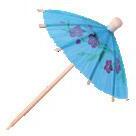

50ml Vodka
30ml Single espresso shot
20ml Coffee Liqueur
Pinch of Salt
3 Coffee Beans
Method: Add Vodka, espresso and coffee liqueur to a shaker. Shake briskly and strain into a cocktail glass. Garnish with three coffee beans
100ml Blue Curacao
100ml Vodka
1 lemon, juiced
1 orange, juiced
1 lime, juiced
200ml soda water
8 Maraschino cherries and 1 tsp of the syrup
A few handfuls of ice cubes and some crushed ice
Method: Place ice cubes in a large jug add the Curacao, Vodka, fruit juices, syrup and cherries. Stir until the outside of the glass feels cold. Half fill your glasses with crushed ice and strain the cocktail into the glass. Top up with soda water and stir, garnish with the Maraschino cherries.
50ml Rum
25ml Lime juice
12 mint leaves
2tsp extra fine sugar
25ml soda water
Method: Take the lime wedge and squeeze them into the glass. Gently press together the limes and sugar, add mint to the glass and press with a spoon to release oil. Half fill the glass with crushed ice and add the rum and churn.




The Versions is a collaboration album of covers from her catalogue by an all-female line-up. The 10-track album, out June 10, will feature Robyn, Sia, Kelsey Lu, Jamila Woods, Tyson, and more. All of the artists on the LP have a personal connection to Cherry and her music. Listening to this album takes me back in time especially the reworked version of ‘Manchild’ with Sia.
This album finds Kehlani in a good place focussing on love and spirituality and replacing the darkness of her 2020 album with a fresh vibe that feels uplifting. She is joined by Justin Beiber, Jesse Reyes and Syd to create an album that is softer, stronger and better than ever.



I really can’t resist a Kylie album and this one is a real treat, especially if you fancy boogying around the kitchen! Livestreamed in November 2020, the album features live performances from Kylie’s "Infinite Disco" online performance. The album features favourites like "In Your Eyes," "Light Years," "Slow (a mash-up with Donna Summer's iconic "Love To Love You Baby') and "Say Something," performed with the House Gospel Choir.
If you love Kylie, you won’t be disappointed.
The mix of sounds and approaches on 'Just Like That’ reveals how, 50 years after the release of her debut album, Raitt continues to personify what it means to stay creative, adventurous, and daring over the course of a life's work. 'On this record, I wanted to stretch', she says. 'I always want to find songs that excite me, and what's different this time is that I've tried some styles and topics I haven't touched on before'. It’s been six years since her last studio album, Dig in Deep, and it’s been worth the wait.

Kate Rusby
I was really excited when I saw the press release for this album. I haven’t listened to Kate for years - I simply got out of the way but the 'First Lady of Folk', celebrates an amazing 30 years as a professional musician with the release of a brand new album 30: Many Happy Returns. The album features collaborations with heavy hitters such as Ladysmith Black Mambazo, Richard Hawley, Darlingside, KT Tunstall, Sarah Jarosz, Sam Kelly, Dan Tyminski, Beth Nielsen Chapman, Damien O'Kane and on the physical version of the album, a bonus track with the Royal Northern Sinfonia. The songs are newly recorded versions of favourites from across Kate's career.

The 2CD companion piece to Sheryl Crow’s forthcoming documentary film, Sheryl, features 35 songs spanning 3 decades of music from the nine-time GRAMMY® Award winner. 3 new songs are included with her many hits such as “If It Makes You Happy”, “Soak Up The Sun, “All I Wanna Do, and many more. Crow has sold more the 35 million albums worldwide and in this documentary and through her music she talks about how she has battled sexism, ageism, depression, cancer, and the price of fame.




Devastated by her mother’s death, Sophie longs to get away from an empty house full of memories so when a chance discovery among her mother’s belongings hints at a past Sophie knows nothing about, she jumps at the opportunity to escape to the magical idyllic Greek town of Methoni. Partly based on her own love of travelling in Greece whilst dealing with the grief of losing her mother, Emma Cowell’s debut novel is a compelling read.

 Fiona Gibson
Fiona Gibson
For three decades
Jen has loved being a flight attendant. Now redundant and grounded, she’s persuaded to dive into the dating world for the first time in her life. Is she heading for disaster? Or could this be her most thrilling journey yet?
A heart-warming and hilarious novel that proves age is just a number and it’s never too late for a second chance.

It is October 1966 and a landslide at a coal mine has buried a school: Aberfan. William decides he must act, so he stands and volunteers to attend. It will be his first job, and will bealthough he's yet to know it - a choice that threatens to sacrifice his own happiness. His work that night will force him to think about the little boy he was, and the losses he has worked so hard to bury. But compassion can have surprising consequences, because - as William discovers - giving so much to others can sometimes help us heal ourselves.
Jo Browning Wroe’s debut novel is haunting but deeply moving, especially for those of us who can remember the Aberfan disaster and the loss of so many young lives.
Imogen has always dreamed of writing for a magazine. Infinite internships later, Imogen dreams of any job. Harri might just be Imogen's fairy godmother. She's moving from the glossy pages of Panache magazine to launch a fierce feminist site, The Know. And she thinks Imogen's most outrageous sexual content will help generate the clicks she needs. Can either woman reconcile their love for work with the fact that work will never love them back? Or is a chaotic rebellion calling...
Hilarious and unflinchingly honest, Careering takes a hard look at the often toxic relationship working women have with their dream jobs.
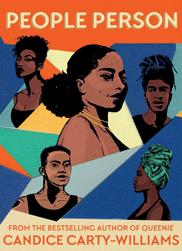

Dimple Pennington is thirty, and her life isn't really going anywhere. An aspiring lifestyle influencer with a terrible and wayward boyfriend, Dimple's life has shrunk to the size of a phone screen. And despite a small but loyal following, she's never felt more alone. That is, until a catastrophic event brings her half-siblings Nikisha, Danny, Lizzie and Prynce crashing back into her life. And when they're all forced to reconnect with Cyril Pennington, the absent father they never really knew, things get even more complicated.
From agonising decisions on foreign air strikes to making headlines about orgasms, from sitting in on history-making moments at the UN to eating McCain potato smiles at a black-tie banquet in China, the life of a politician is never dull. And it’s also never been more important. But politics is far bigger than Westminster, and in this book, Jess Phillips makes the compelling case for why now, more than ever, we all need to be a part of it.
With trademark humour and honesty, Jess Phillips lifts the lid on what a career in politics is really like and why it matters - to all of us. This is the inside story of what’s really going on.




There’s no doubt that the Covid pandemic has had a huge negative impact on the state of people’s mental health.

According to the charity Mind, from over 12,000 people surveyed, 65% of adults and 68% of young people with mental health problems say their mental health has got worse since the first national lockdown and 26% of adults and 18% of young people experienced mental distress for the first time during the first national lockdown.
It may take many years before we know the full extent of what the pandemic did to our mental health as a nation but from a purely anecdotal account, we know that many children have suffered by being isolated from their friends and family.
According to two very enterprising and highly experienced women, Julie-Anne Graham and Sinead Tiernan, we need to help children build their emotional intelligence which gives them a strong core foundation, a sense of self-worth and the ability to deal with negative thoughts and emotions. And, if we do this successfully, our children will feel better about themselves and know how to deal with their worries and anger, help them make friends more readily and develop good self-esteem and confidence.
That’s a tall order, not only for the kids themselves but also for the adults in their life but thankfully Julie-Anne and Sinead have developed an online learning resource to help.

The Emotional Toolkit for Kids is aimed at children aged 7-12 and deals with such topics as identifying the root cause of their negative feelings, separating feelings and behaviours, how to calm themselves down and regain emotional balance and dealing with frustration and anger - to name only a few things in the programme.
They use journaling, grounding and breathing exercises, acupressure, visualisations and creative activities to help children learn the necessary techniques to build the blocks of good emotional health and the good news is that adults can also join in.

The Emotional Toolkit includes 20+ videos, 10 audio meditations and a course workbook full of activities including The Wheel of Emotions and The Emotional Tool Selector.

Both Julie-Anne and Sinead have vast experience when it comes to helping others change their mindset to a more positive and healthy outlook and have proved their worth when dealing with children.
If you would like to know more about The Emotional Toolkit for Kids you can visit their website www.theinspiredcreators.com



Thanks to Julie-Anne and Sinead, we have 5 free programmes to give away. You can read all about what the course has to offer at www.theinspiredcreators.com but all you need to do to enter is send us an email at competitiontime@bephenomenalwomen.com with the subject matter as Emotional Toolkit.
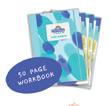
JUST SAY IT...
Take me back to the great old days when life was carefree and easy.
We played kick the tin, knock the doors and run, skips, rounders.
The boys playing football, well that's if us girls didn't steal the ball and run just so we would be chased by the boys.
Thinking we were big girls when we stole our first fag of our mum or dad and then taking that first puff. Nearly choking to death but that didn't stop us.
When we got money we bought 10 No 6 or Embassy and your best friend would have douts on it for life.
Going to the chippy: pasty and chips, a tin of coke and you’d still have money for fags. Every Boxing day all your mates going to the pictures.
When we became teenagers we had our skinny jeans, white fluffy socks with high heels, tanktops RaRa skirts and trench coats.

Kissing the boys around the back of your house or school and hiding your fags from people
who might know your mum or dad or granny. Off to the school discos dancing to Abba or the Nolan sisters and the boys to Bad Manners and hoping the boy ya fancied ask ya to dance to a slow song. Then becoming 18 and you're all legal now going to the discos and having a Babycham because we thought it was posh and standing in your double denim with blue or lilac eye shadow, blue eyeliner and your hair smelling of Vosene and Charlie body spray. Hoping the boys would notice you.


Those days are past now and our kids will never know the fun their mums, dads and grannies had.
So all ya young lads and lassies - your mums and dads and grannies did it all long before you did. You young ones on your phones, computers and gaming consoles will never know what the great old days were like. Good times when friends were real friends, and still are, and the
It’s not always about the grammar or the spelling. It’s not always about what rhymes with what or being so precise that you get lost in how to say something rather than what you want - or need - to say.
Be Phenomenal Women is all about you….. so if you have something you want to say: Just Say It!

Send us your thoughts, observations, poetry, stories whatever you like to justsayit@bephenomenalwomen.com



“This is amazing! I tried this product and was pleased with the great lightweight and non greasy texture. This is my new go to all year round as it covers me for all eventualities.”
VickyD, online reviewer, thebodyshop.com
Facial moisturising lotion that combines high SPF 50+ PA++++, 24hr moisturisation and anti-pollution protection. Made with red algae extract and vitamin C to help brighten the appearance of skin for a healthy glow. Suitable for sensitive skin. Dermatologically tested and vegan friendly.

To find out more visit thebodyshop.com
To find out more visit thebodyshop.com